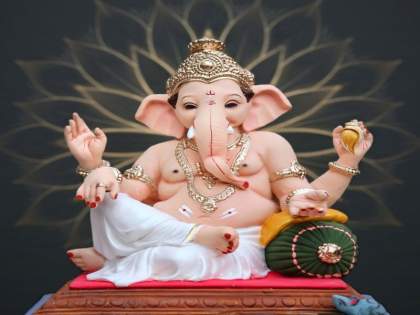Ganesh Chaturthi 2024: Importance of One and a Half Day Ganpati Celebrations in Maharashtra
By Lokmat English Desk | Updated: September 6, 2024 12:56 IST2024-09-06T12:52:05+5:302024-09-06T12:56:45+5:30
Ganesh Chaturthi 2024 begins on 7th September this year. In Maharashtra, domestic Ganpati celebrations are observed in various forms, ...

Ganesh Chaturthi 2024: Importance of One and a Half Day Ganpati Celebrations in Maharashtra
Ganesh Chaturthi 2024 begins on 7th September this year. In Maharashtra, domestic Ganpati celebrations are observed in various forms, primarily divided into four types: one and a half days, five days, with Gauri, and Anant Chaturdashi. Among these, the one-and-a-half-day celebration is particularly significant. It’s essential to understand why this duration holds importance. Traditionally, religious texts and knowledgeable individuals provided guidance on when to install and immerse Ganpati idols. Villagers would follow these instructions with faith, relying on their village priests, astrologers, or purohits for direction. Today, however, modern interpretations and media can sometimes introduce confusion regarding these rituals.
Historically, decisions regarding these auspicious timings—whether for Ganesh Chaturthi, Samvatsarik Shraddha, or Sankashti—were based on precise calculations involving midday tithi, dawn tithi, moonrise, tithi timing, Nakshatra, and other celestial factors. Such knowledge wasn’t commonly understood by everyone in earlier times, so communities would listen to those well-versed in religious practices. Ganesh Chaturthi in the month of Bhadrapada is particularly centered around the Parthiv Ganesha Puja, where a clay idol (Parthiv murti) is worshiped. Idols made from materials such as chocolate, vegetables, flowers, fruits, or paper pulp deviate from the religious tradition, as the clay murti has specific significance in this fast.
Also Read: Marbat Festival 2024: Celebrations Underway in Nagpur; Know All About Pili Marbat and Kali Marbat
This fast, often misunderstood, is traditionally a 5-day fast for Muli Chaturthi, which includes 4 days and 1 night of worship. Another belief is that the vitality or "Jivatva" within the clay idol remains for only one day. Therefore, the ideal duration of the fast and pooja is one day. In times past, it was difficult to communicate exact timings of the start and end of Chaturthi to devotees spread across villages. The solution became a one-and-a-half-day celebration, as it offered a clear end to Chaturthi after 36 hours, ensuring proper immersion without confusion. This is how the one-and-a-half-day Ganesha vrat evolved.
Another fascinating story involves the unique half Ganesha idol in Karnataka. Banavasi, an ancient capital of Karnataka ruled by the Kadamba dynasty, houses a Ganesha temple where only half of the Ganesha idol remains. Ordinarily, broken idols are considered inauspicious and are immediately immersed. However, this half idol has been worshiped daily for centuries. A copper vessel hangs above the idol, pouring water continuously for Abhishekam, and there’s a setup to drain the water, much like in the case of a Shiva lingam. Local legend says that the missing half of the idol resides in the city of Kashi (Varanasi), though it’s believed to be impossible to find the other half. This half Ganesha idol continues to be revered and holds a place of deep significance in the region.
Open in app